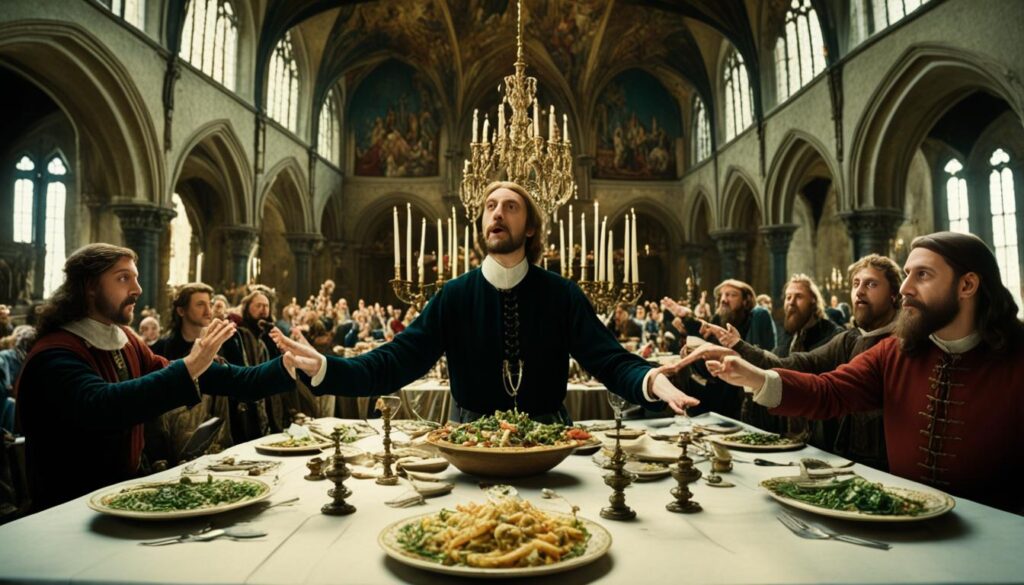In the world of ancient mealtime traditions, the fork has caused a lot of debate. In the Middle Ages, people saw forks as a source of controversy. They thought forks were sinful, which might seem odd today but was a big deal back then.
Back then, using forks was frowned upon. Many church leaders said God gave us our own forks – our hands. They thought using forks was a way to disrespect God’s gift to us and the food He gave.
Key Takeaways
- Forks were considered sinful by many Christian Europeans in the Middle Ages
- Clergymen argued that using forks insulted God’s gift of fingers
- The use of forks was seen as disrespectful to divinely provided food
- Utensil taboos were common in medieval society
- Religious objections played a significant role in the controversy surrounding forks
Forks Seen as Sinful: Religious and Cultural Objections

In medieval Europe, forks were seen as wrong because of religious beliefs and cultural norms. Many thought these utensils were not needed for eating, seeing food as a gift from God. This view was a big part of society for a long time.
Using forks was often seen as a way to show off. People thought hands were the right way to eat. This idea was so strong, it changed how people ate across different social levels.
Church leaders said forks were tools of the devil. They believed eating with hands kept one spiritually clean. This view lasted for many years, making forks slow to become common in Europe.
But it wasn’t just about religion. Culture also played a big part in how people felt about forks. Many saw forks as a sign of too much luxury, moving away from simple eating habits.
The Slow Acceptance of Forks in European Society
Forks have been around since ancient Egypt and Greece. But becoming common at the dinner table was a long process. Cultural eating habits were a big part of this slow acceptance. For a long time, Europeans used knives, spoons, and their hands to eat.

The first to use forks were the aristocracy in the 17th century. The French nobility found forks essential for eating their favorite peas. This change in dining manners didn’t quickly spread to everyone, though. Many saw forks as unnecessary or even sinful, holding onto old superstitions.
As forks became more accepted, using them became a sign of being sophisticated. But it wasn’t until the late 19th century that forks became a staple for everyone. The fork’s evolution from a luxury item to a basic tool shows how culture, class, and tradition shape our eating habits.
Evolution of Forks: From Sinful to Staple
The story of forks going from forbidden to essential is quite interesting. In the Middle Ages, forks were viewed as sinful. Yet, they became a crucial part of our meals over time.
As societies evolved, so did people’s views on forks. The change in dining etiquette was key to this shift. Forks started being seen as useful, not evil. By the late 1800s, they were welcomed at dinner tables in Europe and beyond.
Now, forks are a mainstay in our dining. We use them without a thought. This change highlights how our views on food, religion, and culture have changed. Forks went from being shunned to being a must-have at the table. Their journey shows how even small items can mirror big societal changes.

Leave a Reply